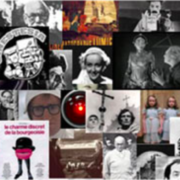Film References: Cinema, Psychology, Psychoanalysis and Mental Distress
In the Film References we included interesting films under a psychological perspective and from a more general point of view of mental distress. The selection of films has followed different criteria: the explicit content; the multidimensional deepening of the psychology of characters or of an atmosphere; the possible usage of the film as a tool in a clinical or educational context; apparent group dynamics. As to the explicit content, it can refer to the presence of characters affected by a mental distress, to the presence of a professional of mental health, the setting in a mental health institution. Clearly, some of these categories overlap, but not always; in some cases the mental health professional is absent even when the film set is a mental asylum, as in The Escaped Lunatic. Often, both a patient and a mental health professional are present when the relationship matters in the film, but it can happen that only a mental distressed character plays a role, or that a mental health professional is portrayed in his private life. It can even happen that they are the same person, rather often indeed when the film is a thriller. Read more

